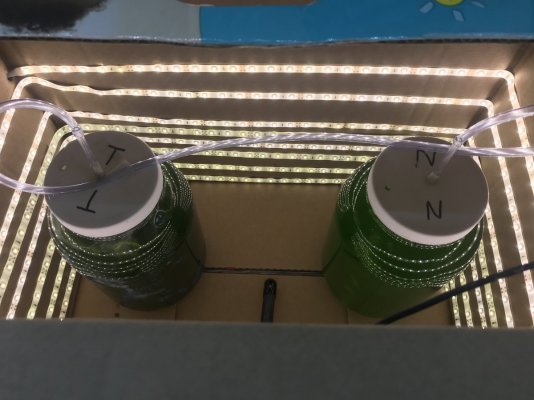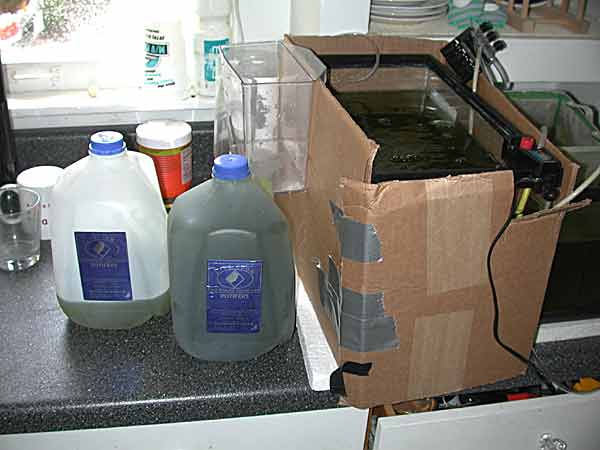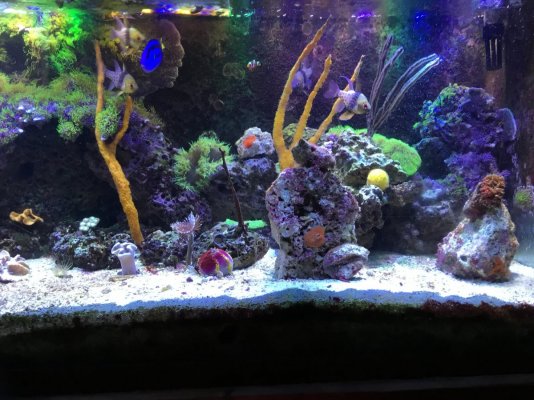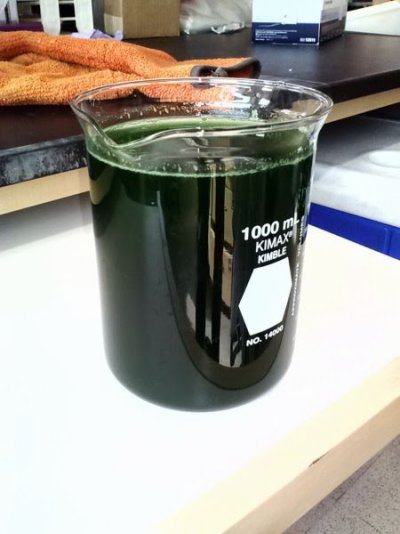- Joined
- Dec 31, 2018
- Messages
- 1,232
- Reaction score
- 1,692
Growing phyto doesn't have to be high tech or labor intensive. I have a 1.5 gal plastic tank in a box with an LED painter's light and an air pump. I dose about 4x the normal amount of f2 and run the light 24x7. I pull off a gal every 5 or 6 days, top off the water, salt and f2 and start all over again.

It comes out super dark, almost black. I dose 4 oz daily to my 150 mixed reef.

It comes out super dark, almost black. I dose 4 oz daily to my 150 mixed reef.






















